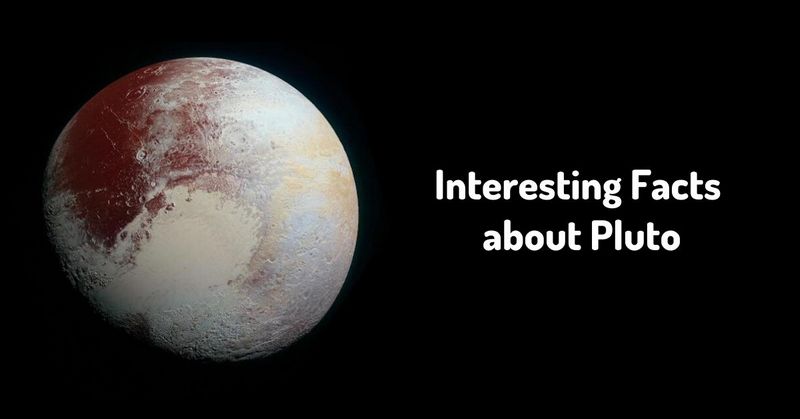Pluto Facts: Interesting Facts about the Planet
What do you remember about Pluto from the school course of astronomy? How far is this tiny planet from the Sun? This planet, although small, is very remarkable and deserves you to know a little more about it.
13 interesting facts about Pluto

- Pluto got its name from an eleven-year-old girl. When scientists discovered Pluto in 1930, they organized a contest for the best name for a new planet. Offers came from all over the world. Eleven-year-old Venice Bernie from Oxford decided that the name of the god of the underworld from ancient Greek mythology – Pluto – is suitable for a dark distant planet. The Lowell Observatory chose the best 3 candidates: Pluto, Minerva, Chronos (the last name was proposed by one of the astronomers). Venice Burnie received £5 for her victory, which is approximately £300 in current money;
- The astronomical symbol of Pluto – PL – the first letters of the name of the planet and the initials of the astronomer Percival Lowell, who predicted the existence of a dwarf in the outer limits of the solar system due to the gravitational influence on Neptune and Uranus. The Lowell Observatory is also named after the scientist;
- In 2006, Pluto was demoted and officially became the dwarf planet No. 134340;
- Pluto turned into a dwarf because of Eris. Pluto had a planetary status for 76 years. But in 2005, scientists discovered Eris, which is 27% heavier than Pluto, despite the fact that it is larger in volume. The discovery of Eris caused astronomers to reconsider the conditions under which the celestial body was assigned the status of a planet, and in 2006 Pluto became a dwarf;
- Pluto has five moons. The diameter of Charon, the largest of them, is about half the diameter of Pluto, so they are often considered as a binary system since the orbits interact. Other companions are smaller, their names: Styx, Nikta, Kerber and Hydra;
- Pluto is the only known planet with an atmosphere of nitrogen, methane and carbon monoxide. It is toxic to humans and varies depending on how close Pluto is to the Sun. When it is closest to the Sun (located at perihelion), the atmosphere becomes gas, and at a maximum distance (at aphelion) it turns into snow and settles on the surface of the planet;
- The orbit of Pluto is highly eccentric, so sometimes it is closer to the Sun than Neptune. In 1999 Pluto was “inside” the orbit of Neptune the last time;
- Pluto has an underground ocean with frozen water. Its depth is from 100 to 180 kilometers. This means that there are three times more water on a dwarf than on Earth. The remaining 2/3 of the planet are composed of solid rocks and frozen nitrogen;
- Pluto has a reverse direction of rotation, like that of Venus and Uranus. This means that it rotates in the opposite direction to the Earth: the sun rises in the west and sets in the east. Pluto makes a full revolution in about a week;
- The sun’s rays reach the surface of Pluto in 5.5 hours. For comparison, they reach the Earth in 8 minutes;
- And this happens because Pluto is located at a distance of 5.9 billion km from the Sun, and the Earth is located at a distance of 149.6 million km. Can Pluto be seen from Earth? And can you see the nut, which is located 50 km from you?
- When Pluto became a dwarf in 2006, the American Dialectological Society called the verb “pluto” the new word of the year. To “pluto” means to demote someone or something in rank or value;
- Clyde Tombo, who discovered Pluto, became the first person to make an interstellar journey after death. The ashes of Tombo were placed at NASA’s New Horizons automatic interplanetary station, which traveled to Pluto in 2006. A couple of months ago, the station flew past Pluto and sent incredible photos to Earth. Then, through the Kuiper Belt, it will go to intergalactic space in the hope of discovering life outside the solar system. The phrase is inscribed on the Tombo capsule: “Clyde William Tombo, the discoverer of Pluto and the third zone of the solar system, is buried here. The son of Adele and Meron, the husband of Patricia, the father of Annette and Alden. Astronomer, teacher, wit and friend. 1906-1997.”
Category: General Issues
Tags: astronomy, planet, pluto
